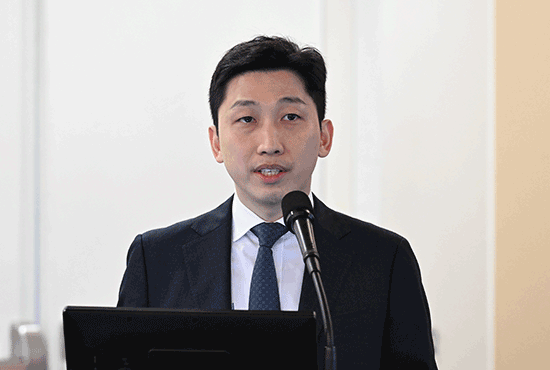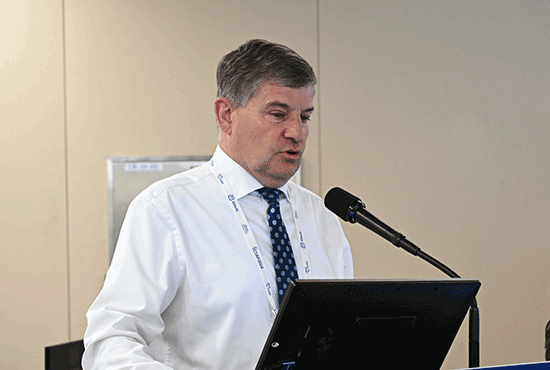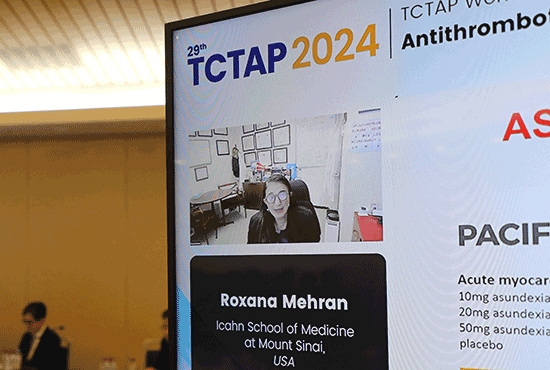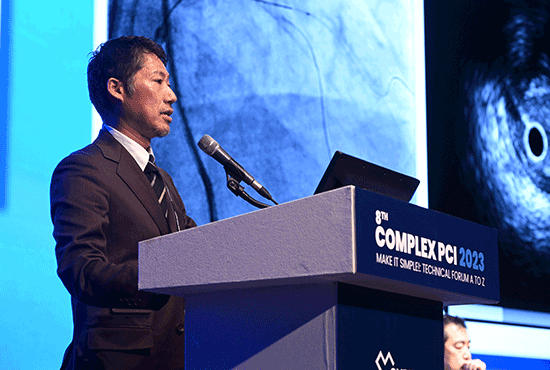TCTAP 2024
What Are Novel and Future Antithrombotic Drugs in ACS and PCI? Are There Still Unmet Needs?
Individualization of antithrombotic therapy
Roxana Mehran, MD
Icahn School of Medicine at Mount Sinai, USA
Deciding on the appropriate antithrombotic therapy after percutaneous coronary intervention (PCI) requires a multifaceted approach that takes into consideration various patient factors, clinical presentations, comorbidities, concomitant medications, and procedural aspects. The ultimate goal is to strike a delicate balance between reducing ischemic events and minimizing bleeding risk.
When tailoring antithrombotic therapy for individual patients, it’s essential to assess their unique characteristics and weigh the potential benefits against the risks. One crucial aspect in optimizing antithrombotic therapy post-PCI is risk stratification. Several tools and scoring systems are available to help clinicians accurately assess bleeding and ischemic risks. These include a validated scoring system, platelet function testing and genetic testing, which can provide valuable insights into antiplatelet responsiveness.
The journey towards determining the optimal duration of antiplatelet therapy post-PCI has been marked by significant milestones, from the early focus on preventing thrombosis to the growing recognition of bleeding risks associated with antiplatelet use. Recent years have witnessed a surge in studies exploring the timing and duration of dual antiplatelet therapy (DAPT) cessation, leading to more nuanced approaches to post-PCI management.
Emerging strategies for managing acute coronary syndrome (ACS) patients offer new avenues for tailoring antithrombotic therapy. These strategies encompass P2Y12 monotherapy, de-escalation approaches and dual pathway inhibition, each with its unique considerations and potential benefits.
Recent randomized controlled trials (RCTs) have provided valuable insights into the efficacy and safety of novel antithrombotic strategies. In the TWILIGHT trial, conducted among 9,000 high-risk PCI patients, participants were administered ticagrelor monotherapy for 1 year, following a 3-month period of DAPT with ticagrelor and aspirin. The trial aimed to compare the outcomes between ticagrelor monotherapy and DAPT with ticagrelor and aspirin. The results revealed a 34% reduction in the bleeding risk in the ticagrelor monotherapy group compared to the DAPT group, specifically in Bleeding Academic Research Consortium (BARC) 2, 3 or 5 events. However, no significant differences were observed in the incidence of death, myocardial infarction (MI) or stroke, which were set as the ischemic outcome endpoints.
De-escalation strategies and P2Y12 monotherapy
Implementing P2Y12 monotherapy for all patients requires careful consideration of various factors, including ischemic and bleeding risk, comorbidities, and concomitant medications. While certain patient subgroups, such as those with ACS, complex PCI, or diabetes may benefit from intensified antiplatelet therapy, others, such as those on oral anticoagulants or at high bleeding risk, may require more conservative approaches.
In the TWILIGHT-ACS trial, which enrolled 5,739 patients with ACS, ticagrelor monotherapy was compared to the DAPT with ticagrelor and aspirin after 3 months. The results showed that ticagrelor monotherapy reduced bleeding events by 53% while showing no significant difference in ischemic outcomes. In the STOPDAPT-2 ACS trial, patients who underwent PCI due to ACS were compared after 1 month, where one group received clopidogrel monotherapy and the other group continued with DAPT. The outcomes were assessed over a 5-year period, revealing no significant differences in the bleeding outcomes between the two groups. The ischemic outcomes were also non-inferior. Similarly, in the STOPDAPT-3 trial, patients undergoing PCI were compared between prasugrel monotherapy and DAPT. Results showed no significant differences in bleeding or ischemic endpoints between the two treatment groups.
De-escalation strategies offer additional opportunities for personalized therapy, by incorporating platelet function testing, genetic testing, dose adjustments, or changing to clopidogrel. A meta-analysis of RCTs, including TROPICAL-ACS, POPular Genetics, HOST-REDUCE POLYTECH-ACS, and the TALOS-AMI trial, examining the effects of four de-escalation strategies, reveals compelling findings. The analysis demonstrated that patients receiving de-escalation DAPT experienced a reduction, not only in bleeding events, but also in ischemic events compared to those on standard DAPT.
Potential for dual pathway inhibition
Dual pathway inhibition aims to address the residual risk of major adverse cardiovascular event (MACE), which remains at approximately 3% despite the use of antiplatelet agents alone. The rationale behind this approach is to further reduce this risk by inhibiting the coagulation pathway in addition to antiplatelet therapy. Notably, factor XI inhibition has garnered attention for its potential to decrease thrombosis without interfering with hemostasis. Clinical trials utilizing factor XI inhibitors are currently underway in various patient populations, including those with atrial fibrillation (AF), stroke, end-stage renal disease (ESRD), or ACS.
In the PACIFIC phase 2 trial, the addition of asundexian to DAPT did not significantly increase bleeding through dose-dependent XIa inhibition. However, no clear benefit was observed in terms of reducing MACE. Therefore, a larger trial is required to establish the safety and efficacy of asundexian 50mg. Meanwhile, the LIBREXIA program, which employs milvexian, is conducting a large-scale phase 3 trial comparing the safety and efficacy of milvexian in patients with secondary stroke prevention, ACS or AF.
Furthermore, ongoing areas of research that require attention include triple therapy, management of thrombotic risk despite the use of antiplatelet therapy, and left ventricular thrombus management, especially in patients who underwent recent PCI or are facing impending surgery. These areas underscore the need for additional investigation to enhance our understanding and management of thrombotic complications in these patient populations.
TCTAP Workshops
Antithrombotic Hot Issues in ACS/PCI: What Are New in 2024?
Thursday, April 25, 3:40 PM ~ 4:45 PM
Presentation Room 1, Level 1
Check The Session
April 25, 2024 688


























